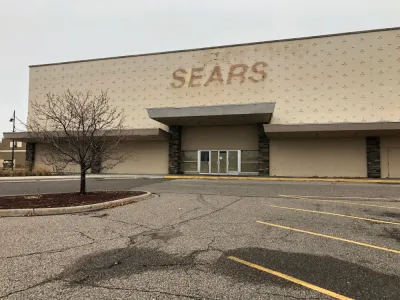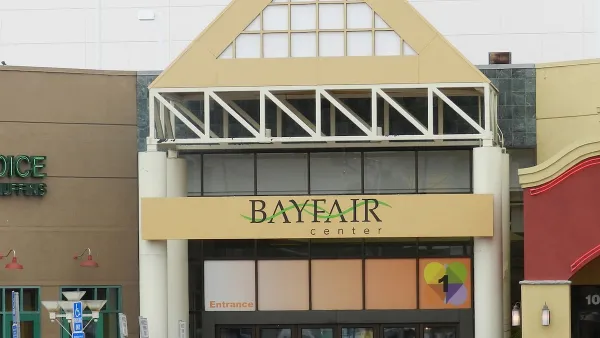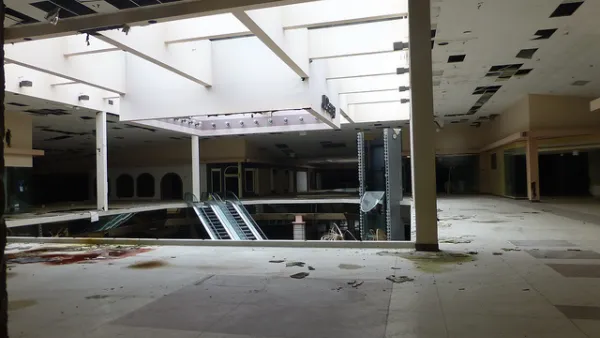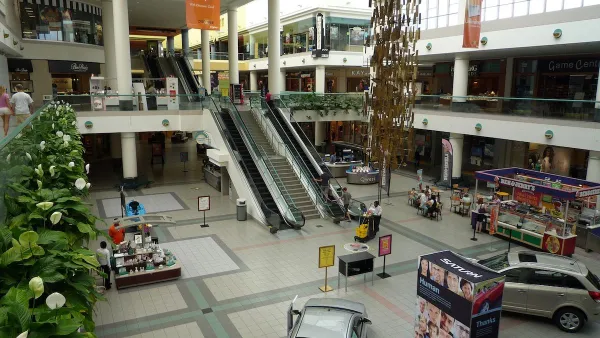‘Dead’ suburban malls, with their existing infrastructure, offer a variety of opportunities for redevelopment into everything from housing to parks.

In an opinion piece in The New York Times, Alexandra Lange calls for a more creative approach to transforming dead malls, one that considers the mall’s roots as an indoor garden. “Some should be demolished and returned to nature, but more should be rethought from an ecological point of view. While malls are a wasteful use of land, replacement with new stand-alone buildings with space-hogging parking lots only compounds that wastefulness: Better to add (perimeter buildings, solar panels, trees) and to swap (markets for department stores, classrooms for boutiques).”
Malls represent heavy investments in infrastructure, construction materials and place making that should not be discarded. The popularity of dead malls as sites for Covid testing and eventually vaccinations underlines these essential qualities: Easy road access, unencumbered indoor space, instant name recognition.
Lange outlines the history of the American mall and its role in public life, then describes a series of mall redevelopment projects that have transformed suburban malls, drawing from “Case Studies in Retrofitting Suburbia” by June Williamson and Ellen Dunham-Jones. Some have been redeveloped into mixed-use projects with apartments, retail, and office space. Others have become civic centers, medical facilities, schools, or parks.
Lange acknowledges the problematic nature of privatizing green space. According to Lange, shopping malls have “historically cultivated specific audiences by virtue of their locations sometimes in segregated suburbs and, later, by codes of conduct designed to limit the impact of groups of teenagers.” However, the changes evident in many shopping centers that formerly catered to mainly white audiences signal that malls can successfully transform into diverse venues for shopping, entertainment, and community functions that serve immigrant communities.
FULL STORY: Get In. We’re Going to Save the Mall.

Analysis: Cybertruck Fatality Rate Far Exceeds That of Ford Pinto
The Tesla Cybertruck was recalled seven times last year.

National Parks Layoffs Will Cause Communities to Lose Billions
Thousands of essential park workers were laid off this week, just before the busy spring break season.

Retro-silient?: America’s First “Eco-burb,” The Woodlands Turns 50
A master-planned community north of Houston offers lessons on green infrastructure and resilient design, but falls short of its founder’s lofty affordability and walkability goals.

Test News Post 1
This is a summary

Analysis: Cybertruck Fatality Rate Far Exceeds That of Ford Pinto
The Tesla Cybertruck was recalled seven times last year.

Test News Headline 46
Test for the image on the front page.
Urban Design for Planners 1: Software Tools
This six-course series explores essential urban design concepts using open source software and equips planners with the tools they need to participate fully in the urban design process.
Planning for Universal Design
Learn the tools for implementing Universal Design in planning regulations.
EMC Planning Group, Inc.
Planetizen
Planetizen
Mpact (formerly Rail~Volution)
Great Falls Development Authority, Inc.
HUDs Office of Policy Development and Research
NYU Wagner Graduate School of Public Service




























